The cost of Disc Replacement ( Cervical /Lumber) in Thailand ranges from THB 534750 to 713000 (USD 15000 to 20000)
Disc replacement, also known as artificial disc replacement, is an orthopedic procedure in which the worn out or damaged part of the disc material between the two vertebrae is removed and replaced with an artificial or synthetic disc. Depending on the location of damage, this procedure can either be cervical or lumbar disc replacement. This surgery is usually performed by making an incision in the abdomen (for lumbar) or neck (for cervical) and it may take the surgeons up to three hours to perform this procedure.
Disc replacement is conducted across all orthopedic and neurosurgery hospitals in Thailand. This procedure is conducted by a team of highly experienced and skilled orthopedic surgeons and neurologists. Both types of specialists are involved in the surgery because this procedure concerns both the spine and the spinal cord. Hence, the guidance of both the specialists is required for a successful outcome of the surgery.
Disc replacement cost in Thailand is highly affordable and cheap as compared to the Western countries. The affordable cost of disc replacement in Thailand ensures that this procedure can be availed by people from all parts of the world. Moreover, the quality of treatment offered by the hospitals that conduct this treatment remains the same. This procedure is carried out by a team of highly skilled surgeons who hold a vast experience in conducting spinal surgeries.
| City | Minimum Cost (USD) | Minimum Cost (THB) | Maximum Cost (USD) | Maximum Cost (THB) |
|---|---|---|---|---|
| Bangkok | USD 15000 | 534750 | USD 20000 | 713000 |
Treatment cost
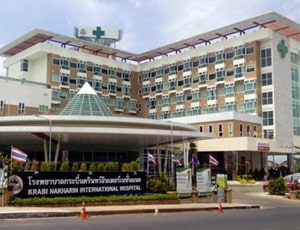
Types of Disc Replacement ( Cervical /Lumber) in Krabi Nakharin International Hospital and its associated cost
| Treatment Option | Approximate Cost Range (USD) | Approximate Cost Range (THB) |
|---|---|---|
| Disc Replacement (Overall) | 6251 - 18378 | 219439 - 662412 |
| Cervical Disc Replacement | 6111 - 15042 | 225990 - 529276 |
| Lumbar Disc Replacement | 8753 - 18341 | 314275 - 665217 |
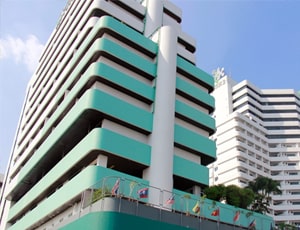
Types of Disc Replacement ( Cervical /Lumber) in Phyathai 2 International Hospital and its associated cost
| Treatment Option | Approximate Cost Range (USD) | Approximate Cost Range (THB) |
|---|---|---|
| Disc Replacement (Overall) | 6111 - 18936 | 224763 - 670096 |
| Cervical Disc Replacement | 6370 - 14843 | 226762 - 525817 |
| Lumbar Disc Replacement | 8624 - 18698 | 317409 - 678876 |
DOCTORS IN 11 SPECIALITIES
FACILITIES & AMENITIES
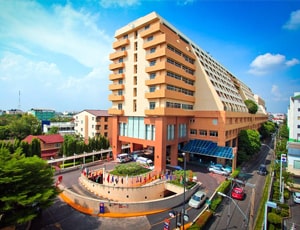
Types of Disc Replacement ( Cervical /Lumber) in Vejthani Hospital and its associated cost
| Treatment Option | Approximate Cost Range (USD) | Approximate Cost Range (THB) |
|---|---|---|
| Disc Replacement (Overall) | 6349 - 18886 | 218959 - 653444 |
| Cervical Disc Replacement | 6193 - 15215 | 218614 - 535494 |
| Lumbar Disc Replacement | 8933 - 18632 | 310943 - 654749 |

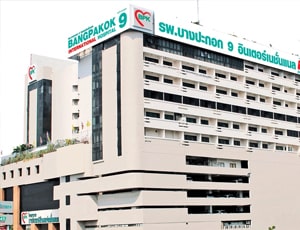
Types of Disc Replacement ( Cervical /Lumber) in Bangpakok 9 International Hospital and its associated cost
| Treatment Option | Approximate Cost Range (USD) | Approximate Cost Range (THB) |
|---|---|---|
| Disc Replacement (Overall) | 6112 - 19012 | 219240 - 673946 |
| Cervical Disc Replacement | 6323 - 14677 | 225466 - 532261 |
| Lumbar Disc Replacement | 8698 - 18381 | 308764 - 654533 |
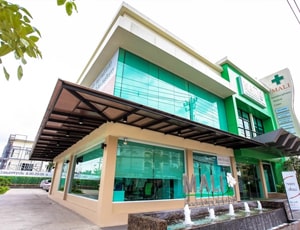
Types of Disc Replacement ( Cervical /Lumber) in MALI Interdisciplinary Hospital and its associated cost
| Treatment Option | Approximate Cost Range (USD) | Approximate Cost Range (THB) |
|---|---|---|
| Disc Replacement (Overall) | 5645 - 16929 | 200550 - 604798 |
| Cervical Disc Replacement | 5606 - 13499 | 200976 - 481747 |
| Lumbar Disc Replacement | 7903 - 16933 | 281031 - 601497 |
DOCTORS IN 12 SPECIALITIES
FACILITIES & AMENITIES
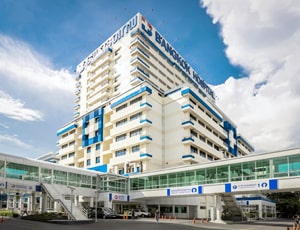
Types of Disc Replacement ( Cervical /Lumber) in Bangkok Hospital and its associated cost
| Treatment Option | Approximate Cost Range (USD) | Approximate Cost Range (THB) |
|---|---|---|
| Disc Replacement (Overall) | 6151 - 18744 | 222848 - 672155 |
| Cervical Disc Replacement | 6231 - 14895 | 225512 - 541033 |
| Lumbar Disc Replacement | 8810 - 18355 | 306141 - 681754 |
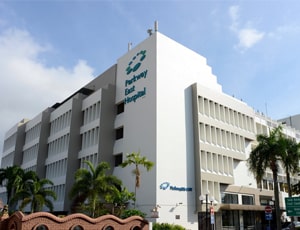
Parkway East Hospital located in Joo Chiat Pl, Singapore is accredited by JCI. Also listed below are some of the most prominent infrastructural details:
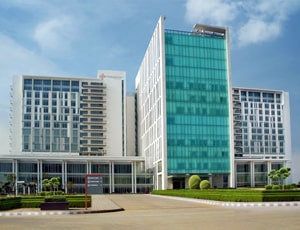
Types of Disc Replacement ( Cervical /Lumber) in Medanta - The Medicity and its associated cost
| Treatment Option | Approximate Cost Range (USD) | Approximate Cost Range (INR) |
|---|---|---|
| Disc Replacement (Overall) | 7319 - 11278 | 590702 - 909722 |
| Cervical Disc Replacement | 5619 - 9011 | 466179 - 725991 |
| Lumbar Disc Replacement | 7254 - 11188 | 595462 - 903995 |
DOCTORS IN 14 SPECIALITIES
FACILITIES & AMENITIES
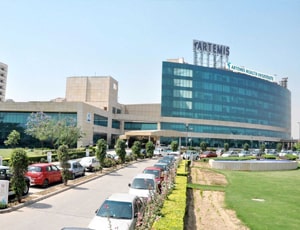
Types of Disc Replacement ( Cervical /Lumber) in Artemis Health Institute and its associated cost
| Treatment Option | Approximate Cost Range (USD) | Approximate Cost Range (INR) |
|---|---|---|
| Disc Replacement (Overall) | 7399 - 11375 | 612623 - 909882 |
| Cervical Disc Replacement | 5742 - 8961 | 461578 - 753982 |
| Lumbar Disc Replacement | 7421 - 11043 | 605492 - 913610 |
DOCTORS IN 15 SPECIALITIES
FACILITIES & AMENITIES
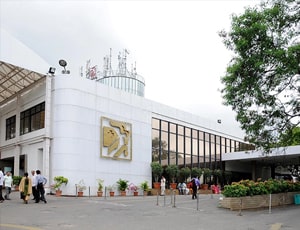
Types of Disc Replacement ( Cervical /Lumber) in Apollo Hospitals and its associated cost
| Treatment Option | Approximate Cost Range (USD) | Approximate Cost Range (INR) |
|---|---|---|
| Disc Replacement (Overall) | 7449 - 11074 | 599782 - 926564 |
| Cervical Disc Replacement | 5537 - 9166 | 465450 - 728201 |
| Lumbar Disc Replacement | 7294 - 11069 | 611745 - 915634 |
DOCTORS IN 14 SPECIALITIES
FACILITIES & AMENITIES
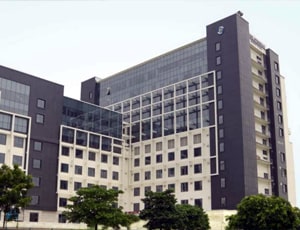
Types of Disc Replacement ( Cervical /Lumber) in Venkateshwar Hospital and its associated cost
| Treatment Option | Approximate Cost Range (USD) | Approximate Cost Range (INR) |
|---|---|---|
| Disc Replacement (Overall) | 6602 - 10150 | 542577 - 835738 |
| Cervical Disc Replacement | 5089 - 8142 | 415740 - 667554 |
| Lumbar Disc Replacement | 6567 - 10164 | 540841 - 830930 |
DOCTORS IN 13 SPECIALITIES
FACILITIES & AMENITIES
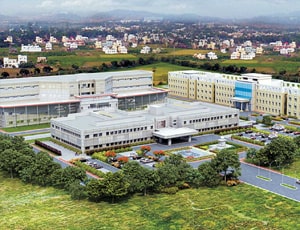
Types of Disc Replacement ( Cervical /Lumber) in Global Health City and its associated cost
| Treatment Option | Approximate Cost Range (USD) | Approximate Cost Range (INR) |
|---|---|---|
| Disc Replacement (Overall) | 7161 - 11095 | 587041 - 910000 |
| Cervical Disc Replacement | 5678 - 8953 | 461448 - 740950 |
| Lumbar Disc Replacement | 7180 - 11035 | 606649 - 914917 |
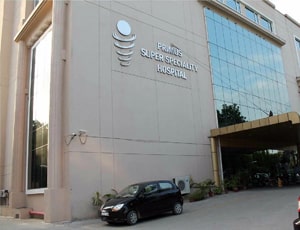
Types of Disc Replacement ( Cervical /Lumber) in Primus Super Speciality Hospital and its associated cost
| Treatment Option | Approximate Cost Range (USD) | Approximate Cost Range (INR) |
|---|---|---|
| Disc Replacement (Overall) | 6611 - 10169 | 540712 - 832194 |
| Cervical Disc Replacement | 5070 - 8101 | 417632 - 667020 |
| Lumbar Disc Replacement | 6619 - 10182 | 541258 - 834160 |
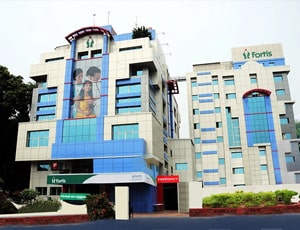
Types of Disc Replacement ( Cervical /Lumber) in Fortis Malar Hospital and its associated cost
| Treatment Option | Approximate Cost Range (USD) | Approximate Cost Range (INR) |
|---|---|---|
| Disc Replacement (Overall) | 6612 - 10196 | 543125 - 833321 |
| Cervical Disc Replacement | 5094 - 8121 | 416178 - 664491 |
| Lumbar Disc Replacement | 6612 - 10170 | 540562 - 831413 |
DOCTORS IN 9 SPECIALITIES
FACILITIES & AMENITIES
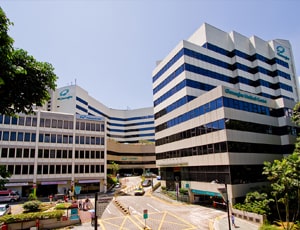
Gleneagles Hospital located in Napier Road, Singapore is accredited by JCI. Also listed below are some of the most prominent infrastructural details:
The spinal cord is a linear arrangement of many small bones known as vertebrae. These vertebrae consist of spaces between them known as intervertebral spaces. They are filled with cartilaginous structures that provide a cushioning effect to the vertebrae and support the movement of the spine. These cartilaginous structures are called Intervertebral discs.
Any pathology of the intervertebral discs such as disc herniation (slipping of the disc from between the vertebrae), ruptured disc, or degenerative disc disease may cause severe back pain due to nerve impingement, indicating the need for either partial or total disc replacement. In partial disc replacement surgery, only a portion of the cartilaginous disc is replaced by the artificial disc, while the total disc is replaced in the total disc replacement surgery.
Cervical disc degeneration and disc rupture may cause chronic neck pain radiating towards the arm. Thoracic disc degeneration may cause chronic upper/ mid back pain while lumbar disc degeneration may cause chronic lower back pain.
Depending on the site of injury, any one of the following three types of incisions are made:
Once the incision is made, the following steps are performed:
Step 1: The organs are retracted once an incision is made to enable visibility
Step 2: The damaged or protruding disc is removed
Step 3: An artificial disc in place of excised disc is placed
Step 4 The artificial disc is secured to the adjacent vertebrae
Step 5: A sealing material between the frictional surfaces of the artificial disc is placed, if required
Step 6: The incision is surgically closed
You may be discharged after two to four days, after a thorough evaluation by the physical therapists. You are taught the proper techniques of getting in and out of bed before discharge from the hospital. You should avoid bending or twisting for the first two to four weeks to avoid straining the surgical site. You may be advised to use braces if your condition requires support in the lower back.
You may recover and get back to normal activities within three weeks after disc replacement surgery. Studies reveal that patients who successfully undergo total disc replacement surgery remain asymptomatic and free from chronic back pain for an average of 8.7 years.
The recovery time after total disc replacement is significantly less than that of spinal fusion surgery. The mobility is not compromised, and the prognosis is good. The success rate of the disc replacement surgery is around 98 percent.
Ask your healthcare adviser for the best multiple options and choose the one that meets your expectations
While depending upon a range of factors, the minimum cost for Disc Replacement ( Cervical /Lumber) in Thailand is USD 20000. Disc Replacement ( Cervical /Lumber) in Thailand is available across many hospitals in different states.
Different hospitals have different pricing policy when it comes to the cost of Disc Replacement ( Cervical /Lumber) in Thailand. The top hospitals for Disc Replacement ( Cervical /Lumber) in Thailand covers all the expenses related to the pre-surgery investigations of the candidate. The Disc Replacement ( Cervical /Lumber) procedure in Thailand includes the fees of the surgeon, hospitalization and anesthesia as well. There are many things that may increase the cost of Disc Replacement ( Cervical /Lumber) in Thailand, including prolonged hospital stay and complications after the procedure.
Many hospitals in Thailand perform Disc Replacement ( Cervical /Lumber). The top hospitals for Disc Replacement ( Cervical /Lumber) in Thailand include the following:
While the speed of recovery may vary from patient to patient, they are still required to stay for about 21 days after discharge. This duration of stay is recommended to complete all the necessary follow-ups and control tests to ensure that the surgery was successful.
Apart from the Disc Replacement ( Cervical /Lumber) cost, there are a few other daily charges that the patient may have to pay. These are the charges for daily meals and accommodation outside the hospital. The per day cost in this case may start from USD 50 per person.
Some of the best cities in Thailand which offer Disc Replacement ( Cervical /Lumber) are:
Patients who are interested in availing telemedicine consultation before they travel for Disc Replacement ( Cervical /Lumber) in Thailand can opt for the same. There are many Disc Replacement ( Cervical /Lumber) surgeons who offer video telemedicine consultation, including the following:
| Doctor | Cost | Schedule Your Appointment |
|---|---|---|
| Dr. Pibul Itiravivong | USD 121 | Schedule Now |
The average duration of stay at the hospital after Disc Replacement ( Cervical /Lumber) is about 3 days for proper care and monitoring. The patient is subjected to several biochemistry and radiological scans to see that everything is okay and the recovery is on track. After making sure that patient is clinically stable, discharge is planned.
There are more than 6 hospitals that offer Disc Replacement ( Cervical /Lumber) in Thailand. The above mentioned clinics have the required infrastructure and a dedicated unit where patients can be treated. Also, these hospitals follow the necessary guidelines as required by the medical associations for the treatment of Disc Replacement ( Cervical /Lumber) patients.
Some of the most sought after medical specialists for Disc Replacement ( Cervical /Lumber) in Thailand are: